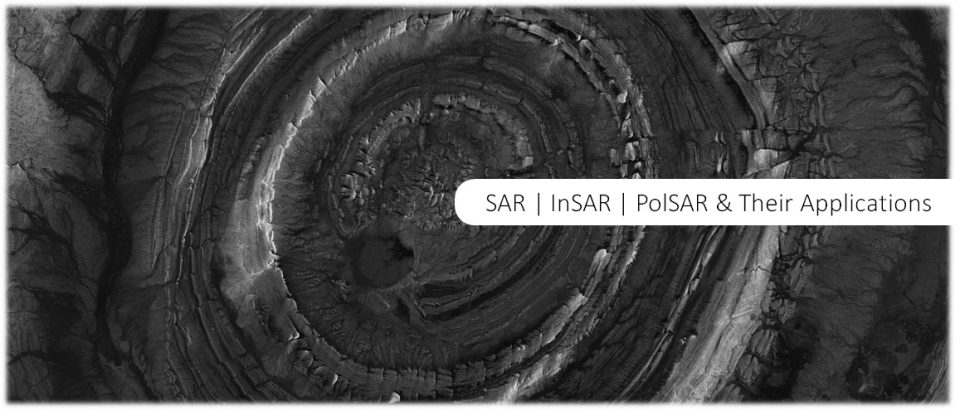
This module introduces you to the main properties of microwave signals including their mathematical description, methods for generating and receiving microwave signals, and the interactions of microwaves with media.
Lecture 2: History of Radar and Mathematical Background
Synopsis:
The development of microwave techniques have had a tremendous impact on modern life. Without realizing it, you are utilizing microwave systems all day long. They are embedded in your cell phone, measure the distance when you park your car, provide you with weather forecasts, and heat your food. Hence, it is worth to briefly discuss how the discipline of microwave sensing has developed over the years to the breadth of applications that we are seeing today. To fully grasp and appreciate the various microwave techniques that will be covered in this class, we will also reiterate some mathematical concepts that are needed to describe microwave radiation.
Lecture Notes:
A version optimized for note-taking can be found here. A 2023 live recording of this lecture can be found here.
Lecture 3: Properties and Propagation of EM Waves
Synopsis:
Whatever your interest in microwave remote sensing – from instrument design to data analysis and application – it is importation to have a sound understanding of the physical properties of electromagnetic radiation. It is a fundamental requirement to know how to describe microwaves, both quantitatively and qualitatively, and to understand their interactions with continuous media (such as the atmosphere) and discrete objects. This lecture summarizes the most fundamental properties of electromagnetic waves to the extent necessary to understand the topic at hand. For more in-depth reading, please refer to the section “Further Reading” of this webpage.
Preparatory Reading in (Woodhouse, 2006):
Please read Chapter 3 “Physical Fundamentals” in (Woodhouse, 2006) in preparation for this lecture. Specifically focus on pages 23 – 34.
A version optimized for note-taking can be found here. 2023 live recordings of this lecture are also available. I was talking a bit slower in 2023 and needed two lectures to get through my material :): Part 1 | Part 2.
During the class, we will inspect SAR image time series over two sites in Alaska to get a first impression of the information content of radar remote sensing data:
- Bering Glacier ( 60.30 °; -143.42 °): This image time series covers 17 images between January 2018 and January 2019. The imaged area includes glaciated surfaces as well as bare land, lakes and ocean water. The animated gif (42.5MB) can be accessed here.
- Gakona Alaska ( 64.74 °; -156.94 °): This time series is composed of 27 images between January 2018 and January 2019. This area contains rivers, various tundra-type natural environments, lakes, and river ice. The animated gif (103MB) can be accessed here.
Lecture 4: Microwave Interactions with the Atmosphere & Discrete Objects
Synopsis:
If you want to make meaningful measurements using microwaves, it is important to know what governs their interactions with the natural world. This chapter provides you with the underlying concepts and theory that helps you understand how microwave sensors see the world. We will start with a look at radiative transfer theory, which ties the interaction of microwaves with objects and continuous media together. From there we will proceed to describe how microwave signals interact with the atmosphere and the physical earth.
Preparatory Reading in (Woodhouse, 2006):
Chapter 5 “Microwaves in the Real World” of (Woodhouse, 2006) provides an excellent summary of a wide range of microwave interactions. Feel free to read through the whole chapter if you can. If you are time limited, please focus on pages 112 – 149.
A version optimized for note-taking can be found here. A 2023 live recording of this lecture can be found here (Part A) and here (Part B).
As part of this lecture, we introduced the basic concepts of Radiative Transfer Theory as a way to think of the interaction of microwave signals with media and objects. If you are interested in this topic, please look at this (admittedly highly simplified) conceptual sketch on this topic:
A 2023 live recording of this lab is available here.
Lecture 5: Detecting Microwaves (Antennas, coherent sensing, active systems)
Synopsis:
While not all microwave techniques require the artificial generation of EM signals, without exception, they rely on efficient sensors that can detect incoming microwave radiation. Understanding the concepts (and performance metrics) of microwave detection will help you understand the capabilities, limitations, and artifacts in microwave remote sensing data.
Preparatory Reading in (Woodhouse, 2006):
Chapter 6 “Detecting Microwaves” in (Woodhouse, 2006) provides a concise summary microwave detection and generation. In preparation for Lecture 5, please read pages 151 – 165 of this chapter, which focuses on microwave detection concepts.
A version optimized for note-taking can be found here. A 2023 live recording of this lecture is available here.
One of the things we discussed on the board during the class is the radar equation. This equation is important for quantitative remote sensing where image data is to be used to understand physical properties of the earth. The board work sketch can be found here:
In Lecture 5, we also briefly touch on radar system calibration. The short video below provides a bit more insight into why and how we can do system calibration. This segment was supported by our friends from fantastic Capella Space, a U.S. SAR satellite operator specializing on small radar systems in the 50 – 100 km range.
The University of Alaska Fairbanks is an AA/EO employer and educational institution and prohibits illegal discrimination against any individual: Learn more about UA’s notice of nondiscrimination.

